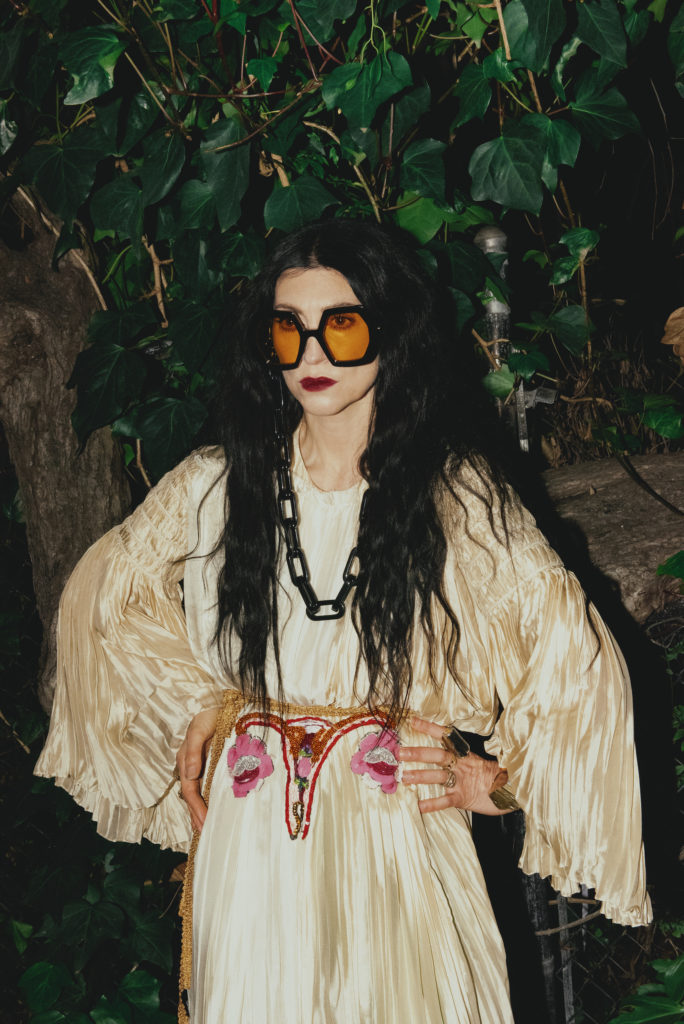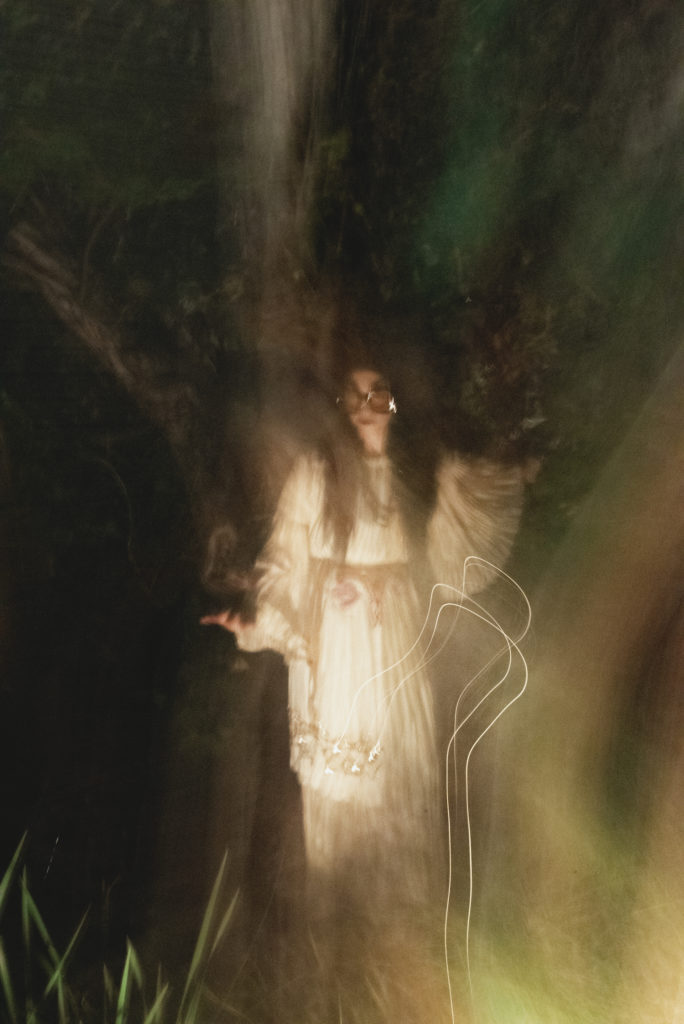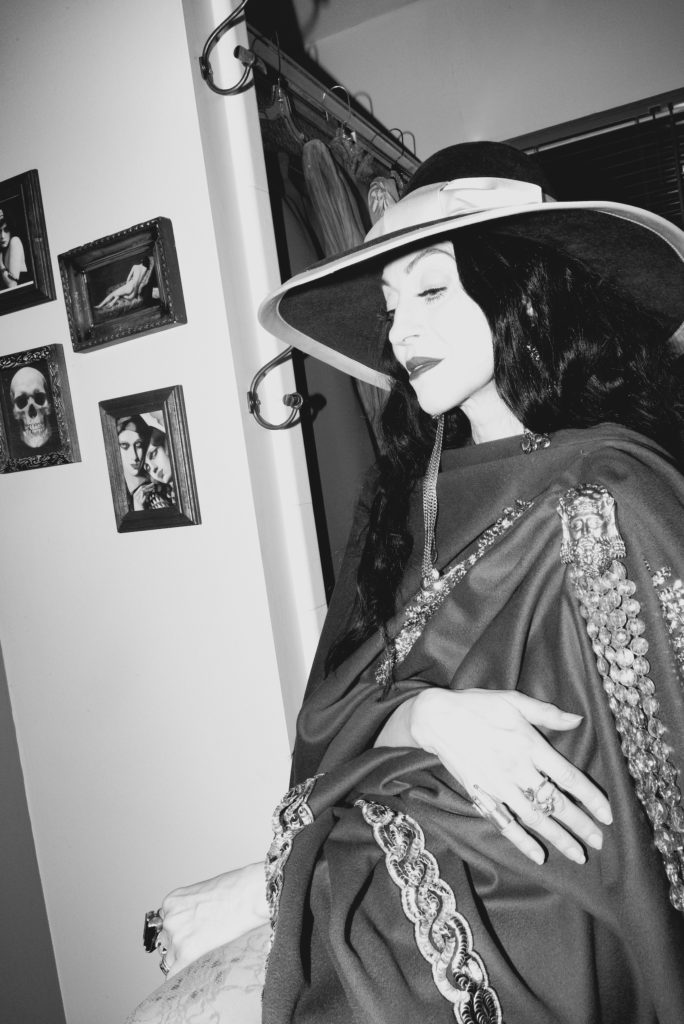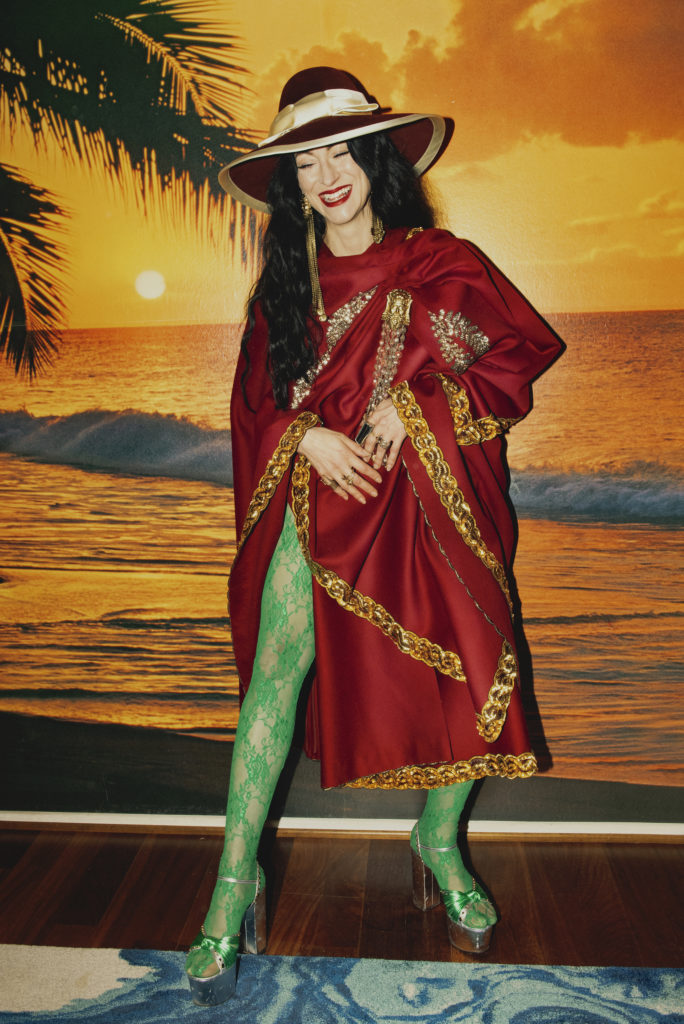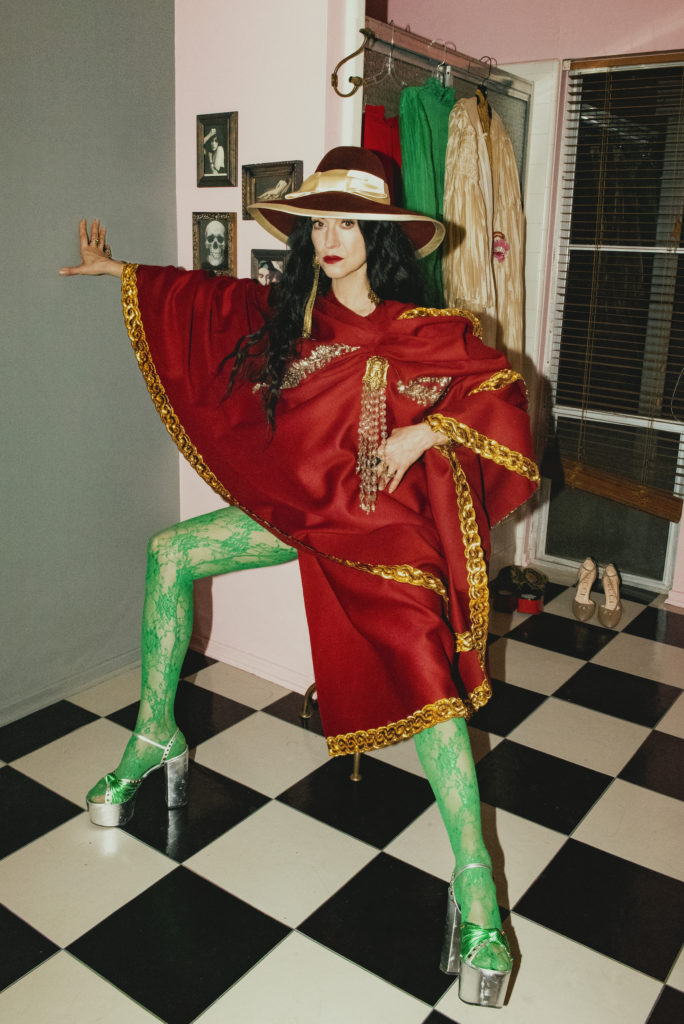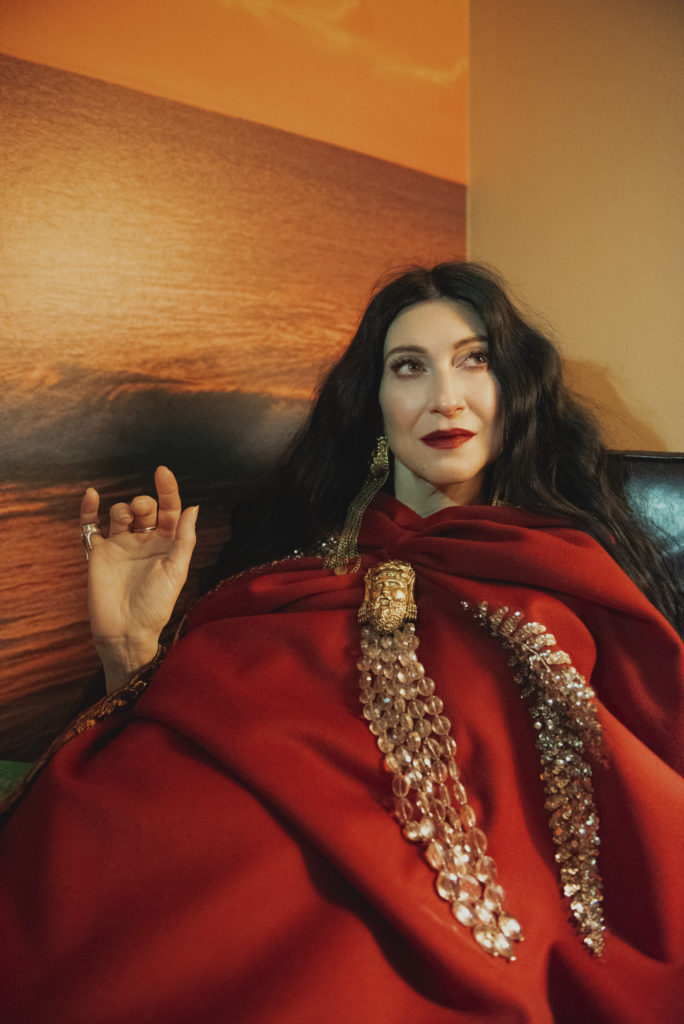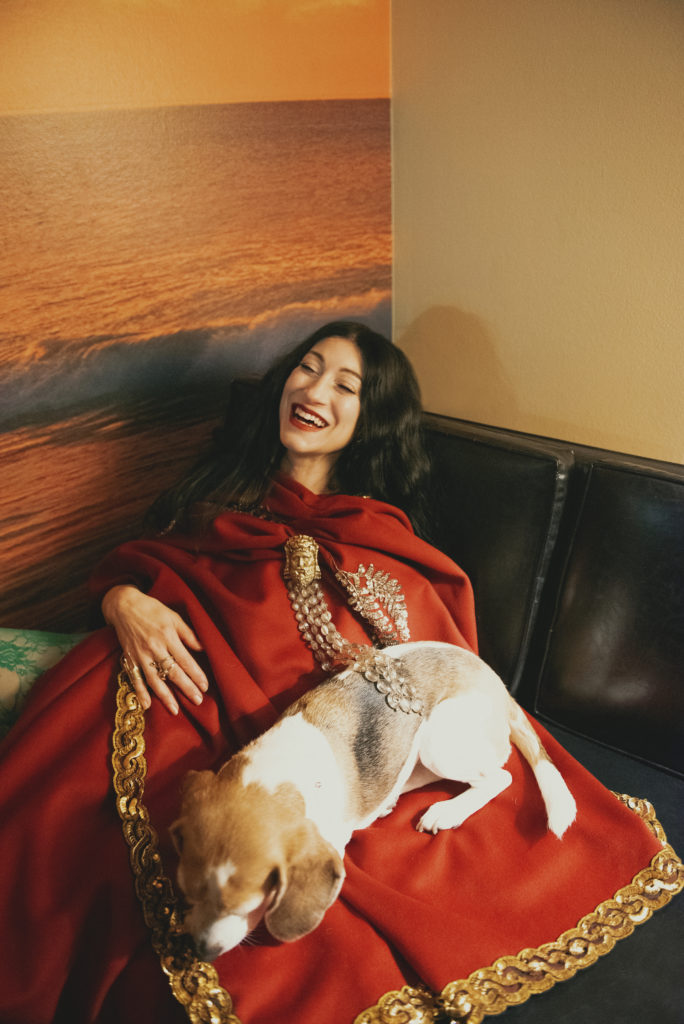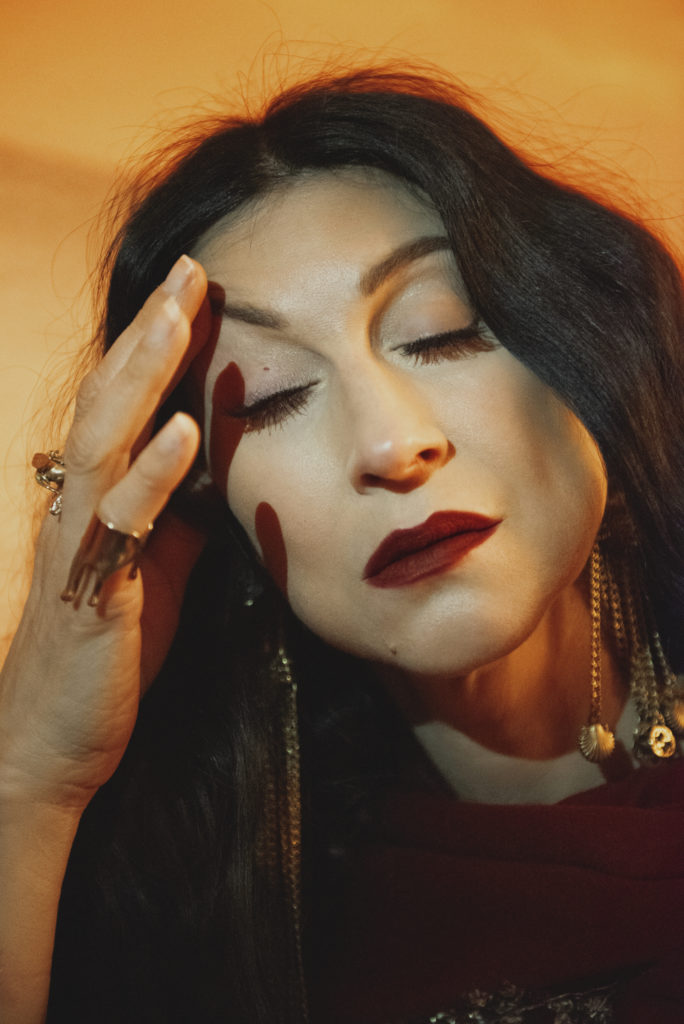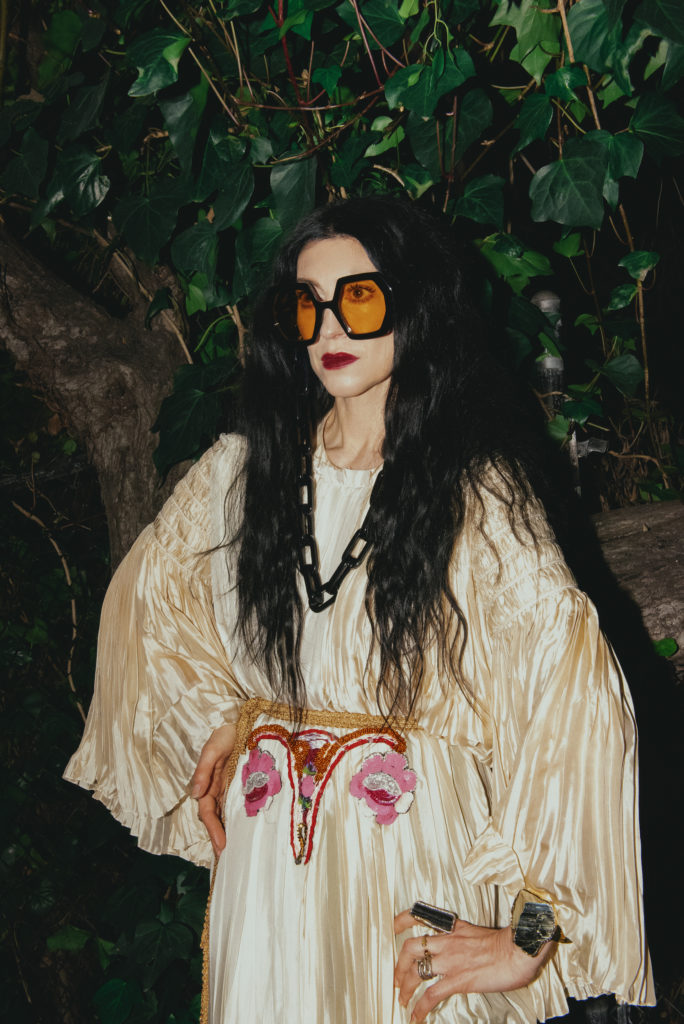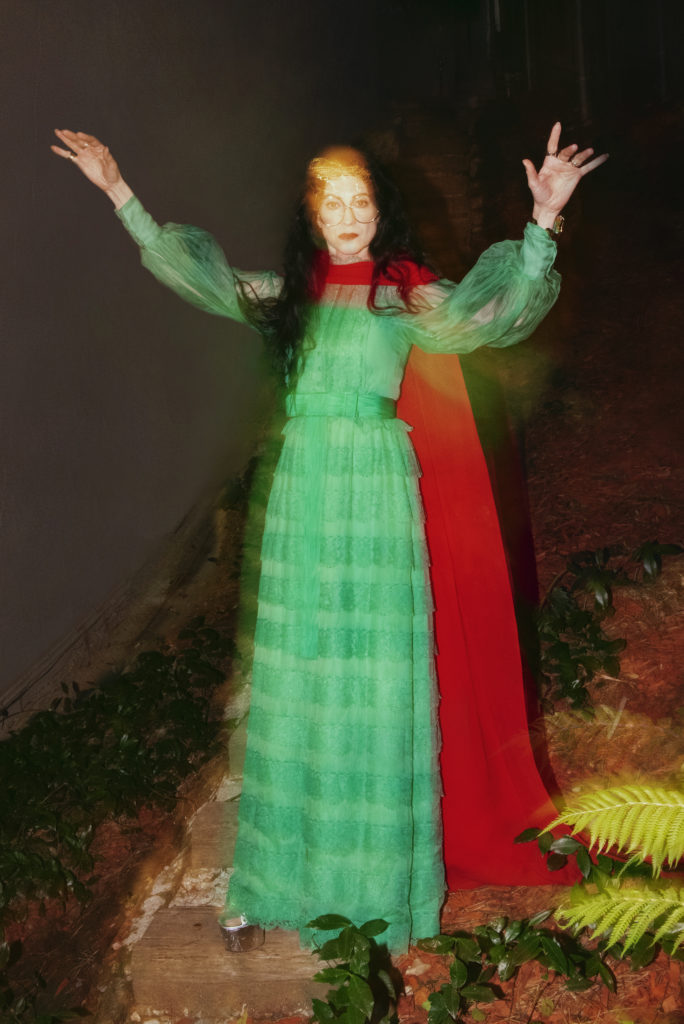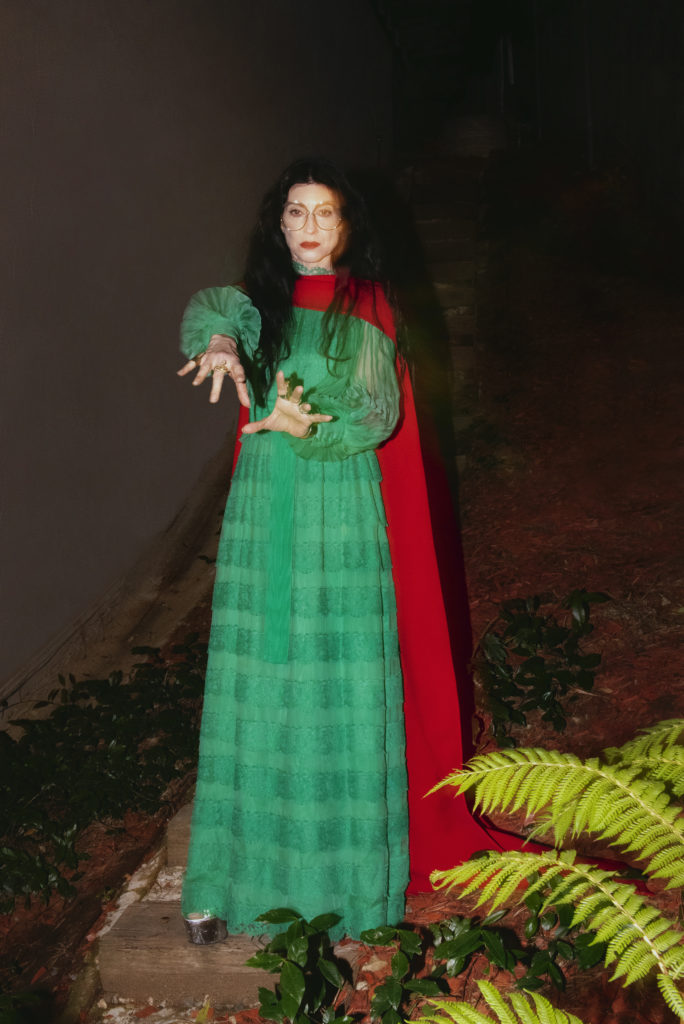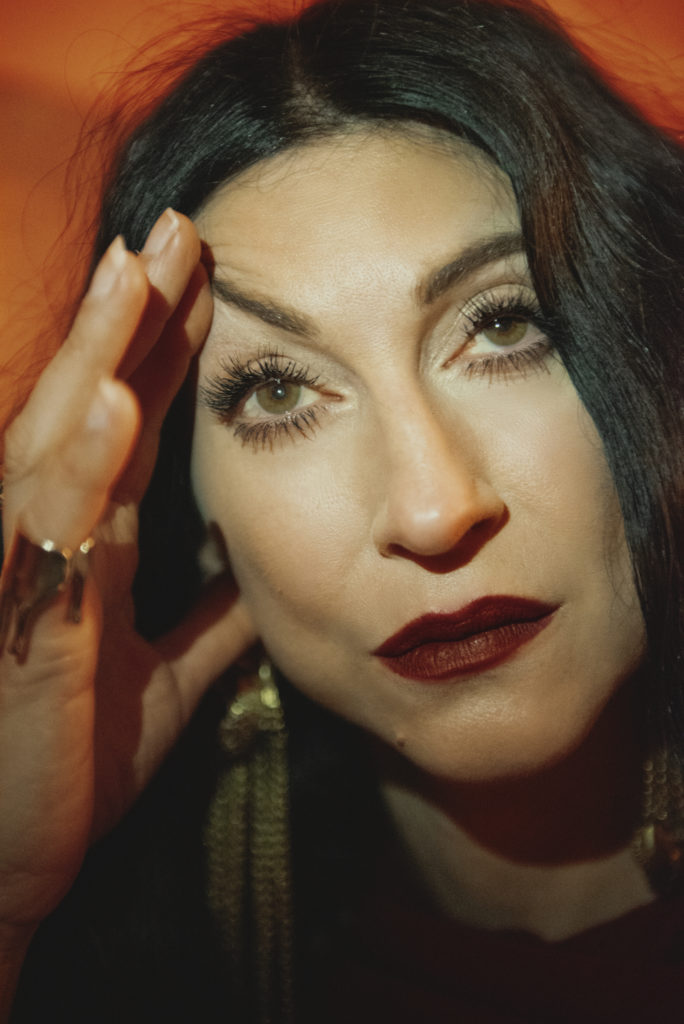FLORIA SIGISMONDI
by Lawrence Rothman
Their idiosyncratic partnership merges visionary film making and music for the film, “The Turning.”
Photography: Allegra Messina
Creative Director: Deborah Ferguson
Interview by Lawrence Rothman.
Q: You released your third book this year “Eat The Sun”. The book spans across the last 15 years of your work and feels a bit more emotional than your past two books Redemption and Immune. Can you tell us about the theme that runs through these photos?
A: I’ve been working on more TV and features and I find that it inspires my art and photography. I’m gravitating towards capturing human emotions and storytelling. The images in the book capture a feeling and a glimpse of a bigger narrative. I had the great opportunity to work with some of the world’s most talented actors like Tilda Swinton, Nicole Kidman, Marion Collard, Daniel Kaluuya, and Timothée Chalamet, to name a few. I truly enjoyed coming up with stories and collaborating with each subject. I also had the opportunity to photograph Kenneth Anger, who, in my opinion, invented the music video. He is an artist who has always worked from the fringe of society and is the perfect anti-hero, hero to me.
Q: You worked with David Bowie many times throughout the years. What was that creative relationship like?
A: We made four music videos together over the years. He was a very special collaborator. He truly respected the creative process and in turn, respected the act of making art and allowed me to be who I was. The amazing lesson I learned from him was how he was always pushing boundaries and didn’t matter to him about how it would be perceived or about being liked. To him it was about breaking things apart, making the shortest video for ” The Next Day”, or throwing things on their head like in “The Stars are Out Tonight”.
Q: Your 2003 music video for SIGUR ROS “untitled” feels as if it foreshadows a night to the distant future here on this planet if we don’t get our shit together on climate change. It’s also displaying a freighting reality if Trump or someone of similar elk continue running America. What was running through your creative mind when creating that piece?
A: The idea was focused on disastrous conditions viewed by innocent children. Children want to play. We set the world for them and the conditions that they are forced to navigate their lives through. The image of the black snow falling, beautifully, is like a dark cloud moving over humanity. It’s here and we can’t look away! But like children who live in war torn countries, they continue to play over dying bodies like a desperate attempt to normalize their horrific world around them. It’s like a safety mechanism that enables them to survive. Putting innocent children amongst the atrocities of previous generations is at the heart of the symbolic image here, and years later we are still talking about it but not much is being done.

Q: You have tackled some potent content with directing 2 episodes of Handmaids Tale, American Gods the SIGUR ROS video, Postmortem Bliss your short film and the Runaways which tackled being a female musician during the 70’s when it was at the height of male dominated rock music. As an artist do you want to do more things that are reality based or do you feel more satisfied expressing your art through the fantastical?
A: I go where the stories are, but I do tend to gravitate to projects where I can express myself creatively and through symbolic images. I love creating worlds where I can bring to life the smallest of details. I enjoy gathering the different elements, wardrobe, set design, lighting and framing and finding the look and feeling of a piece that is in service to the characters of a story. Cinema is a very visual medium and I like to take full advantage of that to tell the story. I love the cinema of the 70’s particularly European cinema, with films like Fellini’s, “Amacord,” Stanley Kubrick’s, “Clockwork Orange” and Terry Gilliam’s, “Brazil.” When I’m having to depict more of a realistic world like the world of The Runaways, I get super deep into research, which excites me in a different way.
Q: What was your experience being a female director in the 90’s in a primarily male dominated video directing world?
A: When I first started 20 years ago, I’d be mistaken for the stylist or makeup artist on set. I don’t think people were accustomed to seeing a young woman like me in the directing position. I never let that stop me or bring me down and just persevered creating images, whether it was in a photo shoot or a film shoot. I knew that if even one young woman or underrepresented person saw that I was doing it, that it might inspire them to do it too!
Q: Can you tell us how you began your career in Canada especially in a house where you were the only one whom spoke English?
A: My family immigrated to Canada from Italy when I was only two years old, so I was the only person who spoke English in my house and I did all translating. When I was five, I was responsible for translating calls from collectors which, needless to say, made me adverse to the sound of the telephone ringing for a long time. Our house was full of art, opera and Italian food! Our hero was Maria Callas and Fellini. My mother would spend endless nights by the sewing machine making costumes and copying the latest dress she saw on The Sonny and Cher show the night before. I dreamed of being an artist and was fortunate to attend OCAD in Toronto for 4 years. My last year, I enrolled in a photography course which quickly turned into an obsession. I actually stopped going to class and was always in the studio or darkroom developing and printing my own photos. This was extremely educational for creating a foundation in filmmaking. It felt like a natural progression moving from photography to film after understanding the craft of using a camera, lighting and composing a frame.
Q: Was your family supportive of you going into the arts?
A: My parents are both opera singers and my name comes from the opera la Tosca. When I was a toddler, I would scribble on a piece of paper and my parents would say I was an artist! I think they would have been extremely disappointed if my sister and I turned out to be bankers or lawyers. They were both the black sheep of their families, so they understand how important it is to have people believe in your passions. When I went to art college, I was so surprised at how many students were having a very hard time getting emotional support from their families. I was very fortunate in that way.
Q: You just released your second feature film “The Turning.” What was it like working with your incredible cast of Mackenzie Davis, Finn Wolfhard and Brooklyn Prince?
A: My entire cast is so talented. It was incredibly rewarding collaborating with each actor to find their character. Mackenzie is a very strong woman, but there’s some vulnerability in her too, which makes her a great actor. Kate’s character needed to go to some very dark places, and she gave it her all. So wonderful to watch. She’s also got this amazing ability to tell a story in her face, even when she’s not saying anything. She’s our unreliable narrator and we need to be able to follow her no matter how far she falls, which I feel she’s done successfully.
As for Miles, I needed somebody who could be protective of Flora (his younger sibling in the film) and could be fun and charming at the same time. But I also saw Miles as a dark angel walking a tightrope. Miles is moving from boyhood to manhood and he is struggling to navigating that delicate time. Finn played a rebellious and mischievous Finn in such unexpected ways. He represents choice in the film. Finn’s acting choices were great and refreshing. He never just played Miles like it was written on the page. We were constantly talked about what if you took away the ghost story of it all, what would the character be going through in real life? We were finding ways to ground Miles to reality. Finn was the perfect age to explore this darker side of a trouble teen.
Brooklynn Prince has a big imagination and a great ability to create a colorful backstory for her characters she plays. She was only 7 when we shot, yet she has a sort of old soul about her. Her understanding of character is unique for some her age. She brought a playfulness yet mischievous quality to Flora and, at times, a welcoming comic relief to the film. She has something very special and I look forward see what Brooklyn will bestow on us in the future.
Barbara Martin who plays the housekeeper, Mrs. Grose, is an exceptionally trained English theater actor. Her icy clear eyes and expressive face just draw you in. Her character represents the person who sweeps everything under the rug. “If you don’t talk about it, it didn’t really happen.” No one believes Kate and when she reaches out to the only other adult in the house, Mrs. Grose, she finds a cold and rigid person. But underneath it all, Barbara is successful at showing us a small crack in her facade…a small glimpse of remorse?
Q: The ending of the film takes the viewer on a wild trip, it’s extremely Lynchian- Did you carry the torch Henry James did with the novel , by the uncertainty of his ending?
A: I first read the Henry James story, “The Turn of the Screw” when I was sixteen. What has made this story one of the oldest and most beloved ghost stories and one people keep coming back to for over 120 years, is that it is so interpretive. It ignites conversations. The Turning plays on that ambiguity – is all this actually taking place, or is it taking place in the character’s mind? And what makes the original story so special is the ambiguity of the ending. I did modernize our adaptation and wanted it to surprise people who had read the book, but I wanted to be faithful to Henry James’ uncertain ending. I didn’t want to spoon-feed the audience and hopefully invite them to think about it, even once they’ve left the cinema. Leaving it open for the viewer to determine Kate’s reality was important to me.
Q: David Lynch, Stanley Kubrick and Terrance Malick films leave the viewer with an ending that they must decode- I really enjoy how you made the ending of The Turning coded and left to interpretation- do you gravitate towards that kind of film making? The kind that’s not wrapped up in bow and spoon fed?
A: The films that I love engage me as a viewer and they leave me with something to think about. Another great example is Nicolas Rogues’ film, “Don’t Look Now”.
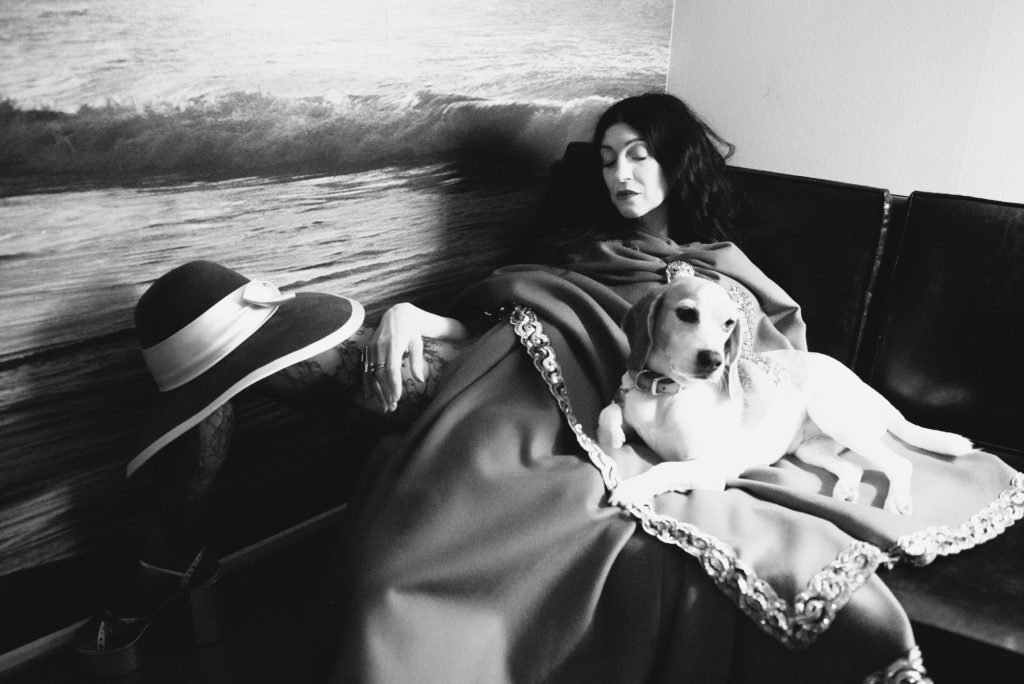
Q: What is the next step to bring more female directors into the world of film? We have such a long way to go to have an equal ratio in this primarily white male dominated profession.
A: I think we need to see more women directing, producing, making music, editing, the list goes on and on. They key is opportunity and experience. We need more underrepresented people telling stories and complex female stories. It’s for the wellbeing of humanity. Not having this balance gets in the way of our growth as spiritual beings having a human experience.
Q: Genre wise what kind of films do you want to direct?
A: I’m interested in drama and phycological stories, but I do love to put myself in unfamiliar territories.
Q: What’s next for you? Will you ever write a children’s book? I would love to see that.
A: I’ve got a few things I’m excited about, but too early to talk about just yet. I do love the idea of doing an illustrated children’s book. Telling a story from the perspective of an outsider, a person who sees the world differently and doesn’t quite fit in, appeals to me. I still paint and love creating characters, so that would excite me. I also would love to direct an opera someday!
Q: When we first met and we were spending a lot of time in New York and we bonded on our love of film soundtracks. We would blast the soundtrack to Baz Lurman’s, Romeo and Juliet, The Crow and Lynch’s, Lost highway soundtrack. Now we had the opportunity to create an all original soundtrack for your film The Turning. With songs tailored to the movie, what was a highlight for you when we were working on this, and why did you want to do a soundtrack of all original music for your film.
A: I wanted to create a world you fell into visually and atmospherically. Music was another layer I could use to add to the universe of The Turning, with a soundtrack specifically for the film. I placed the movie in the 90’s, but I wanted it to feel fresh and speak lyrically to the themes and characters in the film. I had so many great highlights coming down to the studio House Of Lux and checking out who you were collaborating on any given day. I was so elated knowing so many great bands wanted to be part of this. Surfbort, Warpaint, Finn Wolfhard were some of the bands I popped down for. One of my highlights was being in the studio when you recorded the song you wrote for Courtney Love, titled Mother. She was always on the top of our list, so it felt meant to be. I think the lyrics to that song speak to what the film is about. Her song is the “Mother” of the soundtrack and ties in to the plot of the movie.


